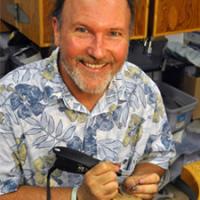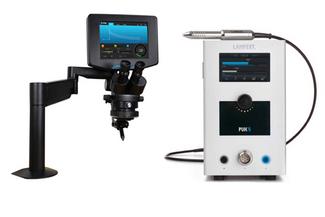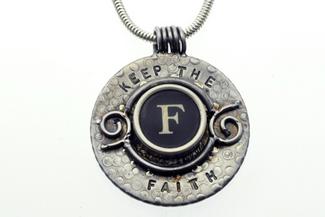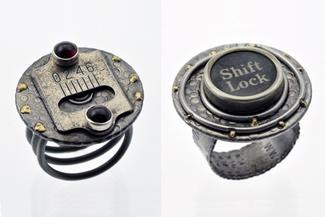Weld It! Precision Pulse Arc Welding for Jewelers
Precision welding technology has revolutionized the fabrication process for jewelers and metalsmiths. The need for clamps and tweezers has almost entirely been eliminated. Now, with this incredible technology, one can just hold parts together and weld them into position. Pulse-arc welding is done under a microscope, so accuracy and details are incredible. Unlike soldering, welding can happen right next to stones or other heat sensitive materials, making some designs that were previously impossible, and repairs that would have been a nightmare, a quick and easy reality.
Jeff Georgantes will show participants how to use both PUK and Orion welders, not a replacement for the torch and traditional soldering, but as a life-changing complement to the torch. This class will show students the basics of pulse arc welding, and give them a pile of tips and tricks to help them re-imagine how their work is created.
Over the course of the week, students will work on a number of different projects and materials to get a comprehensive overview of the capabilities of these machines. First, participants will work on a variety of samples in different metals to get the feel for the welders. Then, learn to deconstruct and reconstruct a stainless steel vessel to get a feel for repair work. Finally, work on an unusually shaped bezel setting for a pendant or ring to learn how these machines can be a real complement to soldering for complex fabrication jobs. Students will leave with samples, a vessel, a ring or a pendant, and an amazing new understanding of this great technological tool.
Meet the instructor

Jeff Georgantes has a MFA in Jewelry/Metals from CSU, Fullerton and a BA in Art and a MA in Sculpture, both from CSU, Humboldt. He taught Art at College of the Redwoods, Eureka, CA, for fifteen years and has taught numerous visiting artist workshops across the USA. He helped develop and coordinate the Jewelry/Metals program at the Mendocino Art Center from the early 1990s until 2005 when he started his position as head of the Jewelry/Metals program at Dartmouth College, Hanover, NH. His work can be seen in Alan Revere's book, The Art of Jewelry.
Materials & Tools
There is a $55 materials fee, which is payable to the instructor on the first day of class. The fee includes various metals for samples, argon gas, a stainless steel drinking vessel (see details below) and other miscellaneous supplies. Students should make a note indicating their choice of drinking vessel in the comments section of this website during checkout. Choose from the following vessel types, each made of stainless steel:
- Wine Glass
- Martini Glass
- 16 oz. Beer Glass
- 10 oz. Drinking Glass
If no choice is indicated, students will recieve a beer glass
- Asymmetrical cabochon (Jeff will have a small assortment of stones available to purchase)
- Silver or gold to make a ring or pendant (Jeff will have a small assortment of stones available to purchase)
- If possible, bring a hack saw and some old files
Basic hand tools:
- needle nose pliers
- round nose pliers
- flat nose pliers
- flush cut or semi-flush cut wire cutters
- 1 each: 2 and 4 cut ½ rd., 6” files with handles
- needle files, (inexpensive imported set okay)
- jeweler’s saw frame (3”-5” most common size, you decide)
- 1 or 2 dozen jeweler’s saw blades (2/0 is a good size for all around work)
- mushroom shaped bezel setting tool or burnisher
- bur lubricant, (bur lube, bur life, etc.)
- Exacto knife or scalpel knife
- small dividers, 3” good size
- safety glasses, dust mask
- layout supplies, (paper, pencil, extra fine point permanent marker, ruler, calipers, etc.)
- tooth brush
Possible sources: Otto Frei, ottofrei,com, 1-800-772-3456, Rio Grande, riogrande.com, 1-800-545-6566



